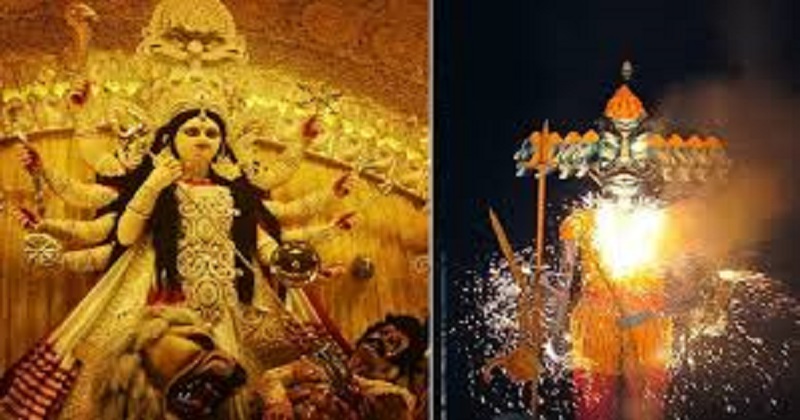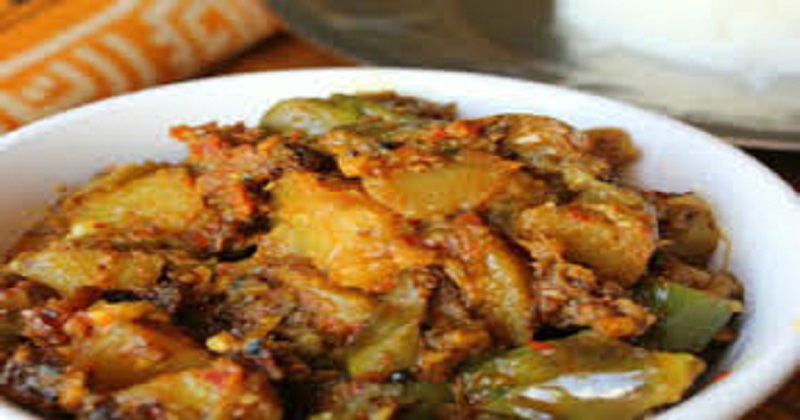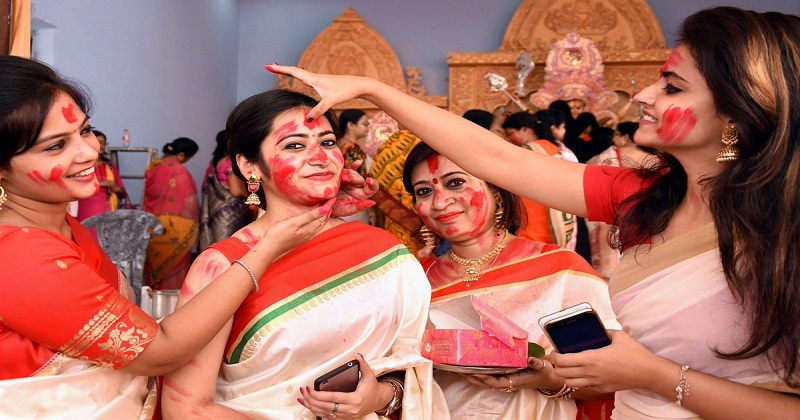
Autumn is here, and festivities are in the air! East and North India respectively celebrate Durga Puja and Navratri at the same time, and the two festivals are equally celebrated across the country. Navratri, as its name suggests, is celebrated for a period of nine days, while Durga Puja is celebrated for ten days.
Navratri culminates in Lord Rama’s victory over the demon king Ravana, during which Goddess Durga is worshipped in her nine forms. Durga Puja commemorates the victory of Goddess Durga over the demon Mahishasur. Devotees fast and abstain from eating eggs, meat, onions, and garlic during Navratri. However, during Durga Puja, people enjoy a variety of authentic Bengali non-vegetarian delicacies Mahalaya is the first day of Durga Puja. It is said that Durga and Mahishasura begin their battle on this day. The first avatar of Durga, Shailputri, is worshipped on the first day of Navratri.

The pageantry associated with Navratri and Durga Puja differs slightly across the country, but they are both celebrated with pomp and splendor. For Bengalis, Navratri is a festival that demands nine days of avoiding non-veg food. However, all dishes are kosher, especially those that cause indigestion and acidity.
Ramlila and Durgotsav
After the Durga Puja, the vermilion game, or Indoor Khela, takes place. During this ritual, married women put sindoor or vermillion on one another before immersing the idol of Durga. Following the immersion, people wish each other Vijayadashami. Ramlila, on the other hand, concludes on Dussehra. A victory over evil is symbolized by the burning of effigies of Ravana, Kumbhkraana and Meghnath.

The difference in food habits
Probably the greatest difference between the two celebrations is this aspect. The people who observe Navratri do not consume rajasic or tamasic food. Onions, garlic, eggs, meat and poultry are prohibited during the 9-day fast. Such restrictions do not apply to Durga Puja. Quite the contrary, the Durga Puja celebration is all about good and rich food that includes non-vegetarian delicacies. On the day of Durga Puja, Bengalis consider it important to eat non-vegetarian food. We may ask why the Bengalis and Hindus consume non-vegetarian foods while others will not even touch them. Let’s find out…

Bengalis also sacrifice meat to their mothers and then eat it afterward. It remains a mystery as to why people choose to eat non-veg on such a holy occasion. It all begins and ends with faith. Bengalis from some communities eat only non-vegetarian food while others don’t. In Bengali communities, it is customary to eat non-vegetarian food. They also offer different offerings to idols compared to other communities. In fact, the Bengali community believes that during Durga Puja of Sharad Navaratri, the Mother Goddess herself comes to live with her children and spends a few days with them at their home. Bengalis, therefore, cook all the food they eat for themselves, ranging from sweets to meat and fish.

There is also the belief that married women can eat fish or non-veg on Durga Puja, there is no prohibition for them, but these days the Bengali Brahmin widow woman must eat traditional food. They cannot eat non-vegetarian food. In many houses, these rules are being lifted. According to folklore, the Himalayan tribes worshiped the goddess during the Vedic era. Durga Maa and Chandika Devi were believed to like wine and meat. To make them happy, therefore, it is necessary to offer meat and alcohol. Strange, but true!
Mahalaya vs Shailputri Puja
Navratri begins with worshipping the first avatar of Goddess Durga which is Shailputri, while Durga Puja begins with Mahalaya, (it was the day when the fierce battle between Durga and Mahishasura began, as per scriptures).

Dusshera vs Vijayadashami
There is a lot of symbolism in Navratri about combatting evil and nature’s wilfulness, as well as for showing reverence for everything around us, even for the things we value most. Navratri is known as the festival of nine days that represents tamas, rajas and sattva. Tamas are the first three days, when Kali and Durga are fierce. The next three days are dedicated to Lakshmi – a gentle, materially oriented goddess. Saraswati, who represents the sattva, is celebrated for the last three days of the festival. It is related to knowledge and enlightenment.
Read more: Navratri 2021 Day 4 – Puja Vidhi, Mantra, Color & Prasad
Investing in these three will enhance your life in some way. Tamas gives you power in one way. Rajas can give you a new level of power. Your power will be different if you invest in sattva. Basically, it’s no longer about power, it’s about liberation. The tenth day is Vijayadashami – a sign that you have conquered all three virtues. You didn’t give into any of them, you saw through them all. That is what Vijayadashami represents. Ultimately, it goes to show that being grateful and revered for what matters in our lives does indeed lead to victory and success.
Durga Puja is the largest festival celebrated in Eastern India and by Bengalis as a whole. During this time, families gather to enjoy traditional Bengali dishes. No matter what the differences between the festivals are, they both aim to bring people closer together through celebration.

Post Your Comments